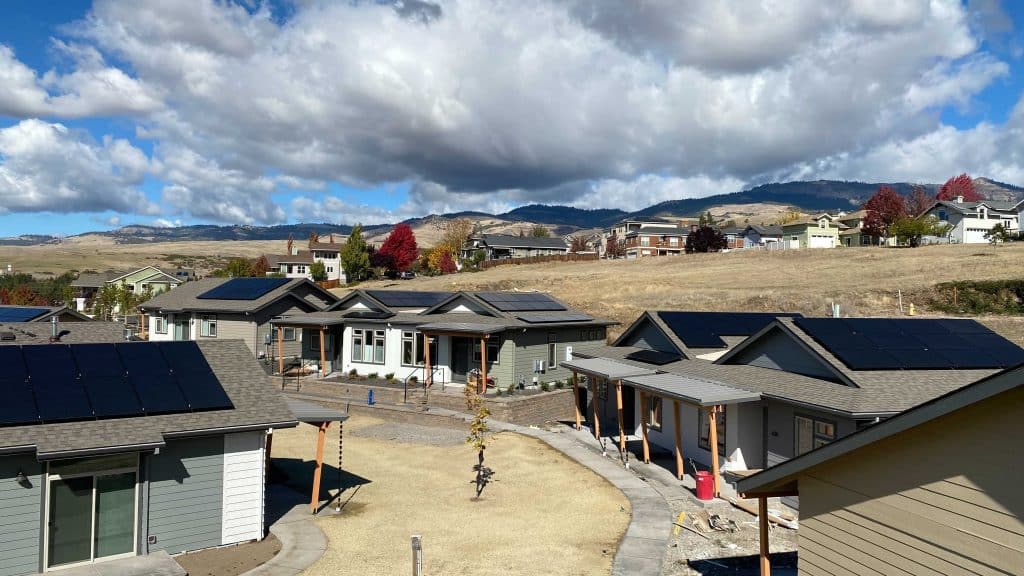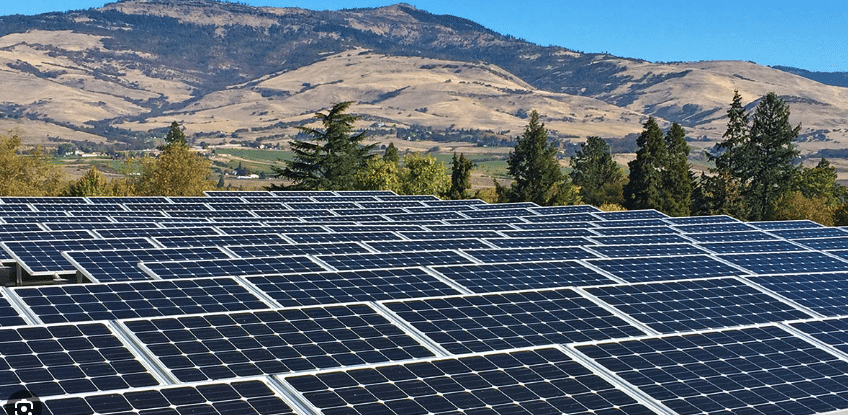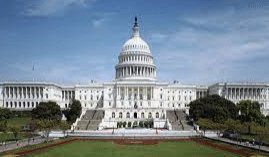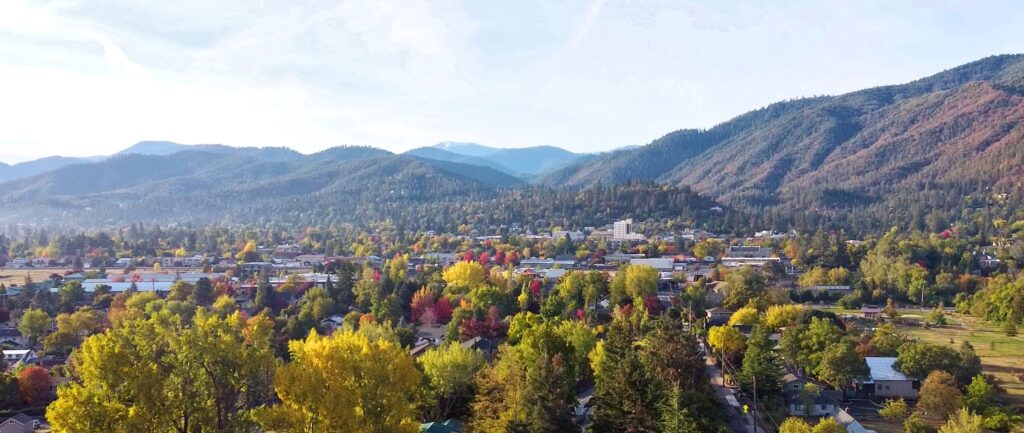The City of Ashland’s commitment to sustainability includes a climate vision for 2050 is to be a resilient community that has zero net greenhouse gas emissions, embraces equity, protects healthy ecosystems, and creates opportunities for future generations.

In this article, we will discuss:
- Where Does Ashland’s Electricity Come From?
- Ashland’s Clean Energy Action Plan
- The City Takes Action- Solar Pioneering
- What can you do to be more sustainable?
- What does a Net Zero Future look like?
Where Does the City of Ashland’s Electricity Come From?
The City of Ashland Electric Department is a public electrical utility with the responsibility of serving the public’s needs for power, a responsibility they have held since 1908.
Today, the power for the City of Ashland is purchased from the Bonneville Power Administration, metered at distribution substations, and dispersed through city-owned feeders and distribution lines, transformers, and meters for each customer. The department is responsible for the engineering, construction, and maintenance of the system and for the distribution of electrical energy.
The Operations Division annually trims trees along 65 miles of overhead power lines to minimize outages during wind storms and maintains approximately 1800 City-owned street lights. The Operations Division also provides community services such as installing and removing Christmas decorations, hanging banners and providing educational services.
Ashland has owned its own power since the 1880’s. In 1886 a group of enterprising businessmen decided Ashland needed electricity. They formed the Ashland Electric Power and Light Company by selling 15 shares of stock at $1,000 each. They then obtained water rights from Ashland Creek and proceeded to build a small electrical generator at the entrance of Lithia Park. It took 3 years until the plaza finally had electricity and customers were charged $1 per lightbulb for use.
Ashland’s Clean Energy Action Plan
Around 2011, using a citizen-led process, The City of Ashland created a plan to reduce our carbon emissions and prepare for climate-related impacts. The culmination of this multi-year process is the Ashland Climate and Energy Action Plan (CEAP). The Climate and Energy Action Plan is a living document and continues to evolve over time. This plan is reviewed every 3 years.

Ashland’s Climate & Energy Action Plan presents strategies, priority actions, and other potential actions for six focus areas:
- Building and Energy
- Urban Form, Land Use, & Transportation
- Consumption & Waste
- Natural Systems
- Public Health, Safety and Well-being
- Cross-Cutting Strategies
The specific goals will be to:
- Reduce overall Ashland community greenhouse gas emissions by 8% on average every year to 2050
- Attain carbon neutrality in City operations by 2030, and reduce fossil fuel consumption by 50% by 2030 and 100% by 2050
The City of Ashland Takes Action- Solar Pioneering
From 2000 to 2002, the City of Ashland, in collaboration with the Bonneville Environmental Foundation, implemented the Solar Pioneer I project, involving installing photovoltaic arrays totaling 30 kilowatts (kW) at the Ashland Civic Center, Oregon Shakespeare Festival, and Southern Oregon University. The project was funded in part by voluntary contributions from more than 260 ratepayers, who paid small surcharges on their utility bills to support the project. In addition to bringing renewable energy to the city, the program aimed to inform Ashland residents about solar energy. Building on the success of the first round of the program, Ashland launched Solar Pioneer II in 2007, which used the same community funding mechanism to finance a 63.4-kW photovoltaic system on the City Service Center.

What Can We Do?
What can community members do? The Ashland Website recommends a variety of steps and resources. PREPARE–SWITCH–RETHINK–RENEW
PREPARE
Ashland anticipates having more frequent and severe droughts, heat waves, and wildfires. These climate change impacts will have a tangible effect on public health and the quality of life for all residents.
- Wildfire smoke can cause serious health complications, especially for those with asthma or other respiratory conditions.
- More frequent and severe heat waves can be deadly, especially for young children, the elderly, and exposed persons such as outdoor workers.
- Drought, decreased summer stream flow and reduced snowpack will put a strain on our water supply affecting our water availability.
We can’t control when emergencies happen, but it is important to take the steps now to be prepared!
SWITCH
Switch off of fossil fuels, such as coal, oil, and natural gas. These emit carbon dioxide into the atmosphere, creating a heat-trapping blanket. Manufacturing the goods we purchase, driving gasoline-powered vehicles, and heating our homes are all examples of how we interact with fossil fuels on a daily basis.
By switching to low or no-carbon energy sources we can lower our carbon footprint
RETHINK your consumption
83% of Ashland’s greenhouse gas emissions come from the residential sector. This includes everything we consume, from food, goods, energy, and services. By becoming more aware of the impact our residential consumption habits have on the environment, we can make more responsible and sustainable choices.
- Consider the life cycle of your goods and services:
- What resources and materials are used to make it?
- Where did the product come from and how did it get to you?
- How do you use the product?
- What happens at the product end-of-life?
RENEWable Energy
Supporting renewable energy is a powerful way to create change. Renewable energy comes in a variety of forms, with the most popular being solar and wind. Renewable energy…
- Reduces our reliance and usage of fossil fuels
- Reduce some types of air pollution
- Supports a green economy. According to the U.S. Bureau of Labor Statistics, some of the fastest-growing jobs are in the wind and solar industries.
Beginning January 1, 2023. Solar electric installations that pass their electric inspections can receive incentive payments of $600 from the City of Ashland. Combined with the current Federal Solar Incentive of 30%, solar is becoming more affordable for residents and businesses in Ashland.
Ashland’s Net Zero Future

One of Ashland’s Goals is the enhancement of solar energy production capacity at city facilities and city-owned parking lots which would reduce electricity demand from the grid, set an example for the Ashland Community, and provide reliable power for both the city operations and broader community.
City Council Goals of Emergency Preparedness and addressing climate change aligns with CEAP building & energy goals. The City of Ashland recently received a grant for solar + storage from the Oregon Department of Energy for $940,000. The project will be a community energy resilience project of net-metered solar power with battery storage, electric vehicle chargers and a micro-grid system to provide electricity to Ashland city services during a grid outage.
The future looks bright for the community of Ashland! Ashland’s commitment to sustainability requires community effort and action. True South Solar is proud to be part of this community and part of the solution.

